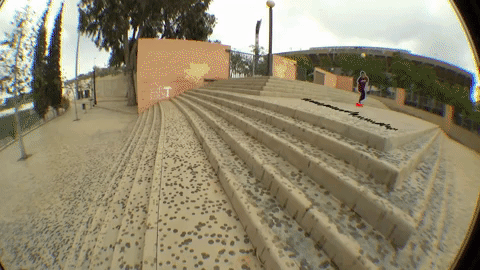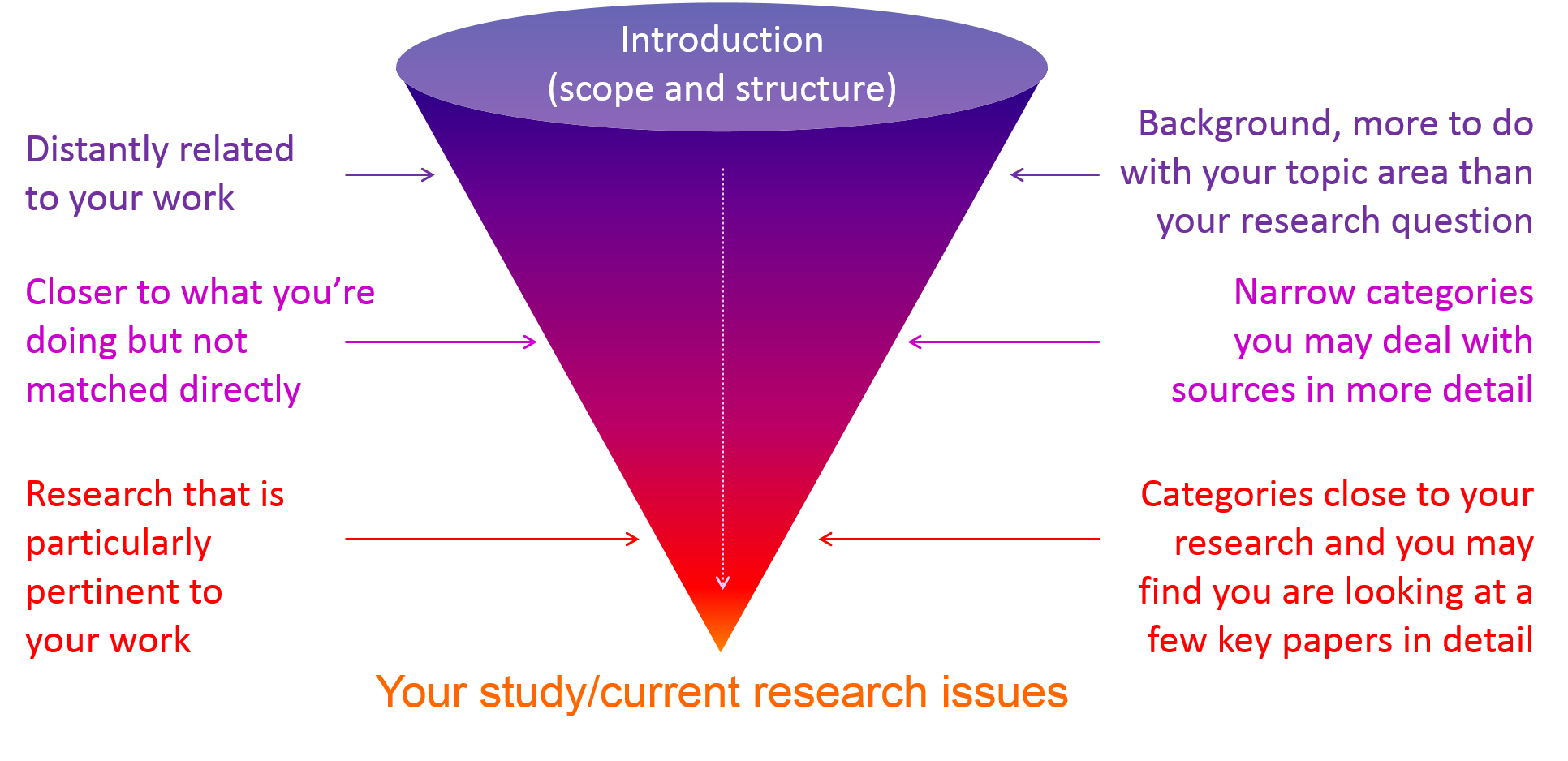Academic Paper: Literature Review
7 min read•june 18, 2024
Dylan Black
AP Research 🔍
28 resourcesSee Units
Introduction
Your Literature Review is the first formal part of your paper. It is the section that is the most detached from your actual research project because you most likely will not bring up your actual research question/topic until the end when you situate your gap in the body of knowledge relating to your topic of inquiry.
The point of your literature review is to explain what is already known about your specific topic of inquiry and establish that the gap you have chosen is truly a gap in the body of knowledge. Coming out of your introduction, your reader will be aware of the broader context of your work and the general idea of what it is you'll be talking about. The literature review takes that context and blows it up into what will eventually become approximately the first 1200-1500 words of your paper (though word count varies across discipline and paper format).
How to Write a 🔥 Lit Review
⚽ The Goals of Your Lit Review
The first goal of your literature review is to, as the name implies, conduct an extensive review of the literature through little-r research. This involves more than just listing the sources and their content because you will be explaining connections between them whether they be agreements in data, disagreements in conclusions, etc.
The biggest mistake students make in their Lit Review - and we'll discuss this in more detail in a later section - is that they just list what sources say and do little to analyze what is actually known about a certain subject. This leads to a weak review of the literature and a murky, undeveloped gap. By connecting your sources, you are able to incorporate multiple perspectives, establish credibility, and at the end of the day, simply have a better reading lit review that truly explains the body of knowledge surrounding your topic.
The second goal of your literature review is to establish your gap and explain how:
- it hasn't been covered by researchers before (this is justified through the fact that you just explained what is already known!)
- why it is relevant to your discipline/topic
This part of your lit review is crucial to your research paper. This part of your paper connects your literature review - all of the known stuff - to what you are doing. This goal basically addresses the question, "ok so we just looked at aaaalllll of these sources, now what are you going to do", answering it with something along the lines of "well, we see that these sources have established [something] about my discipline, but no one has addressed [your gap], so I plan on researching it."
Using phrases like "This paper provides new insight on..." and "However, [researchers, be specific!] have overlooked [your research gap]" can make this especially clear, which is important because your gap is what lays the foundation of everything to come!

Clearing the Gap 😎, Image From GIPHY
👀Varying Perspectives
An especially important part of your literature review is establishing and explaining, as the CollegeBoard puts it, "relevant scholarly works of varying perspectives". This means that your lit review cannot just be a bunch of summaries of random papers strewn across a page at random, despite the content being somewhat similar.
When writing, and more specifically when planning your lit review, understanding the perspectives of each of your papers, and being able to connect them in a way that they join hands, or naturally lead into one another in a logical chain of succession is invaluable.
Pro Tip: A really easy way to organize your Lit Review in a way that perspectives are naturally explained and analyzed is to outline!! Splitting your lit review into sections in which you view different aspects of your
To use myself as an example, in my literature review I focused on three sections: "Marxism and Labor", a section about the economic foundations of my topic, "Applications of Marxism to Film", in which I described how the previous section connects to film in a broader sense, and finally "Marxist Film Theory and Moon", which took the previous two sections and explicitly connected them to my film of interest. In building my Lit Review throughout these 3 sections, not only was I able to split up topics in a meaningful way, but each section built on itself, connecting to points made by previously mentioned sources.
Connecting Your Sources To Your Topic of Inquiry
When writing your literature review, every source you mention at some point or another will have to connect to your overall topic of inquiry, otherwise what's the point? Why would they be used? Thus, when you include a source, not only do you want to explain the content and what the source actually says in terms of the literature but you want to be explicit in explaining the relevancy and credibility of the source in connection to the content of your paper.
This will help you better connect your sources to each other. This is important because the quality of your literature review hinges on how it presents the known information to your readers and helps them understand why your project A) is connected to these sources and B) is a new addition to them.
When you're explicitly building on sources to connect them to the topic of your paper, you more effectively accomplish goal A because your reader doesn't have to do much guesswork. Then, when you move onto your gap, the fact that all of your sources are established as relevant will help you effectively justify your gap.

A sample structure of a literature review. Image from the University of Hull
🍝 What Not To Do: The Source Spaghetti
We've mentioned this a few times throughout this guide, but it needs repeating. There is one thing, and one thing only, that you should never do in your literature review, and that's something called "the source spaghetti". Basically, this is a method of writing a literature review where instead of planning or connecting sources to each other, you essentially list out your sources with a brief summary, quickly moving from source to source with very little rhyme or reason making your lit review muddled and unfocused, like reading a bowl of spaghetti.
While this certainly gets some information on the page, it is not an effective way of writing a literature review for the simple reason that you won't be able to have the level of detail that a good Lit Review requires.

Image from GIPHY
✏️Rubric Points and Logistics
Now that we've gone over some tips and tricks, let's take a look directly at the rubric and see what the CollegeBoard explicitly states are the expectations for a lit review. For reference, the full rubric can be found here, and is the source for all the following rubric screenshots.

Seen above is the row of the AP Research scoring guidelines that best correspond to your literature review. Let's move from a one to a five and see what differentiates each point.
A literature review that earns a one and a two is marked by a single perspective, that is to say, it does not cover a wide variety of sources and does not effectively describe the body of knowledge surrounding a topic of inquiry. Papers that earn a one for the literature review typically use non-scholarly works as opposed to scholarly works in their research. For example, news sources do not count as scholarly, whereas research papers that have been peer-reviewed (that bit is important) do.
Moving into the three-point category, we see that a paper with this score does have varying perspectives and scholarly works, but lacks in the connections department. A paper with this score may have done some solid little-r research, but did not structure their lit review in such a way that the sources were able to be in discussion with one another. This is why a paper that uses a spaghetti sources way of organization will not be successful. Remember that connections between your sources are just as crucial as the content of the sources themselves.
The four and five categories meld into one. In fact, the text in the rubric is exactly the same. What separates a four and a five is a degree of sophistication in your writing. Where a 4 may hit all the points and do it well, a five does that and goes above and beyond. It's a very fine line and frankly, it's pretty subjective on the part of the reader. The easiest way to figure out what separates these two is to read sample fours and sample fives to see the difference for yourself.
Final Thoughts
Congratulations! If you've made it this far you have all the skills to get started on your literature review. Your next steps from here are to get started on your little-r research, start collecting sources, and get connecting. You got this!

Image from GIPHY
Browse Study Guides By Unit
🤨Unit 1 – Question & Explore
🔎Unit 2 – Understand & Analyze
👥Unit 3 – Evaluate Multiple Perspectives
💡Unit 4 – Synthesize Ideas
🗣Unit 5 – Team, Transform, & Transmit
🎓The Academic Paper
✏️Frequently Asked Questions
📚Study Tools

Fiveable
Resources
© 2025 Fiveable Inc. All rights reserved.